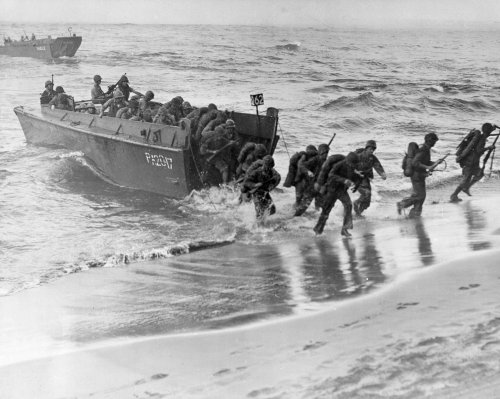During the Normandy invasion of WWII, several landing crafts carried large numbers of vital military personnel to the beaches. Without these boats, the invasion would have been even more difficult as it would have depended almost entirely on the paratrooper forces which were also in heavy use that day. While multiple Allied forces fought on those beaches, it was an American who designed the landing crafts which brought them there.
The designer’s name was Andrew Jackson Higgins, and his personality was almost as big as (if not bigger than) his ideas. He was known for being somewhat abrasive, but he was also known for making things happen once he put them to mind. His landing crafts were one of the most important examples of this ability to enact his visions. With their slanted fronts, the somewhat amphibious vehicles were able to land right on the beach and open up in the front, allowing soldiers to storm out and immediately join in the fray.
Known for their inclusion on D-Day, the so-called Higgins boats were actually used for many key invasions during the Second World War. Higgins had been working on boats since he was only twelve years of age, so he had quite a bit of experience by the time he built the landing crafts. He helped to blur the line between war at sea and war on land, making missions such as the Normandy invasion much more aggressive
Higgins also had military experience, which helped him greatly by the time he was making improvements on WWII strategy. He had served in the National Guard in Nebraska, and he also had experience with strategizing the designs of his boats. The landings crafts are almost less impressive when taking into account the boat he designed for shallow waters, which walled in its propeller to keep it safe from shallow debris. This design was very helpful in the forming of Higgins Industries, the Omaha.com reports.
The landing crafts used in Normandy were dreamed up by a very creative and ambitious man who knew how to design a boat and knew what the military needed. Higgins was capable of providing vehicles which excelled in terms of utility and benefitted from his experiences conversing with high-ranking officers. He even knew how to plan his use of materials, collecting durable wood in preparation for the steel shortage which plagued WWII, when his landing crafts were in high supply. Without Higgins’ bright ideas and entrepreneurial flair, D-Day might have played out much, much differently.
